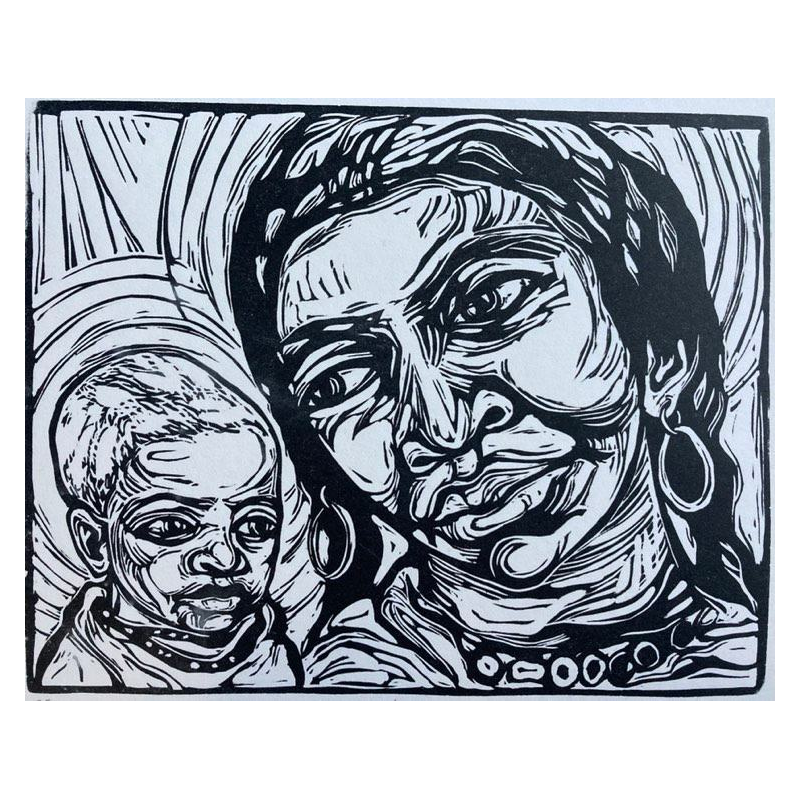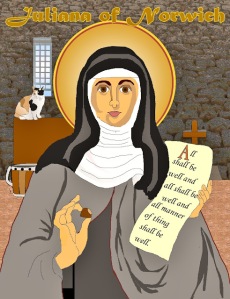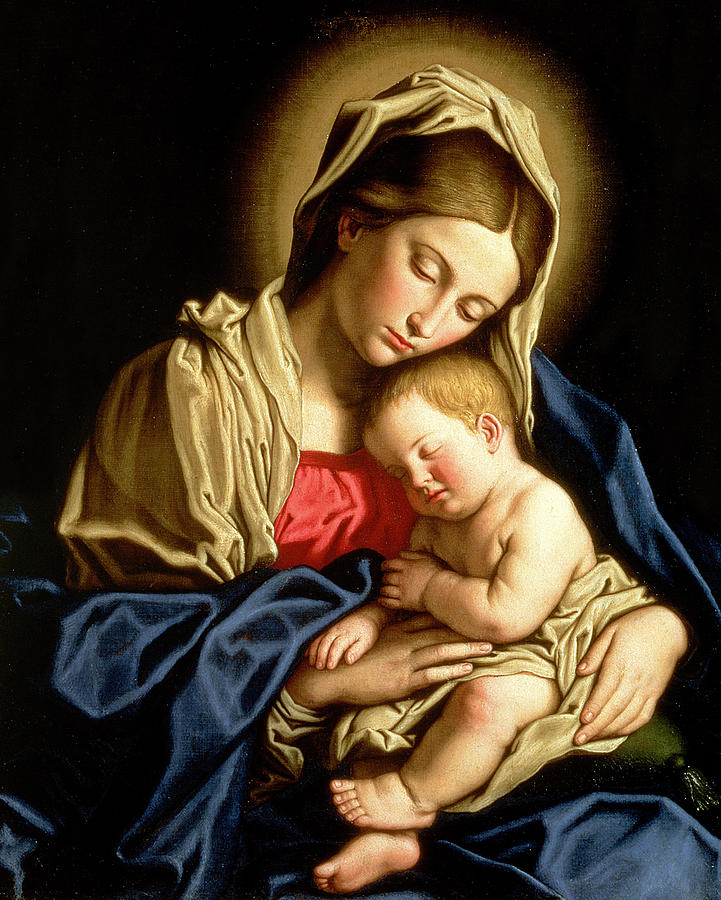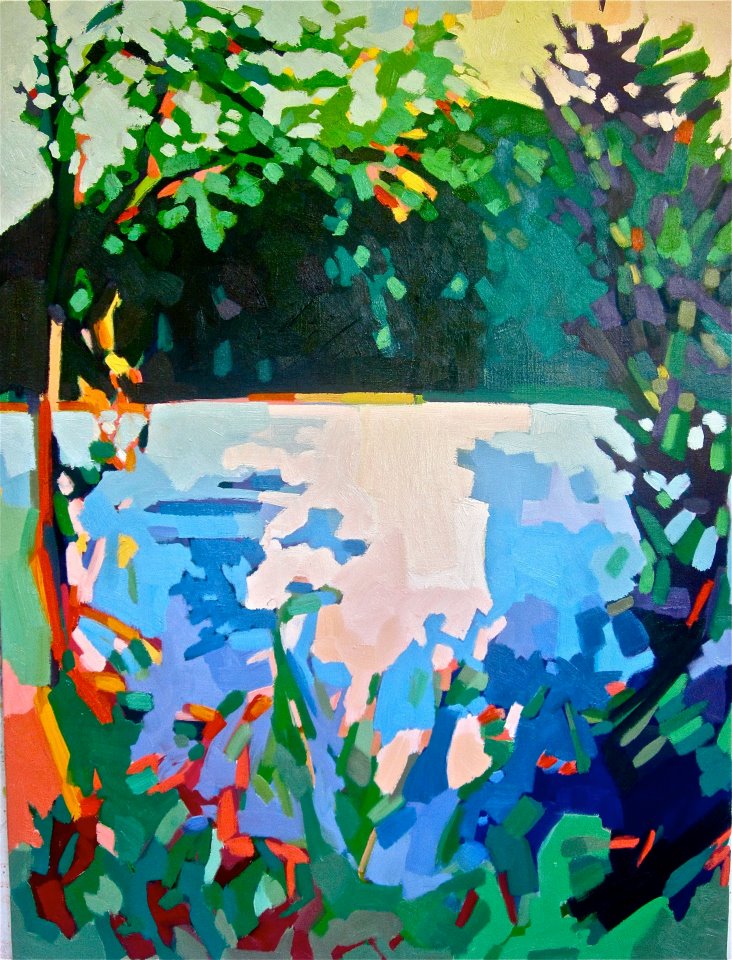
Archive for the ‘Visual art’ Category
Happy Mothers’ Day
Posted in Local, Music, Religion, Visual art on May 8, 2022| 2 Comments »
Merry Christmas, and let there be music
Posted in History, Music, Religion, Visual art on December 25, 2016| 1 Comment »
Julian of Norwich on Good Friday
Posted in Hemingway, History, Literature, Religion, Visual art on April 18, 2014| 14 Comments »
I’ve been reading Julian of Norwich lately, and although she’s a slow read she’s worth every minute. In honor of Good Friday I’ve included part of her description of the dying of Christ on the cross.
Lady Julian, or Dame Julian (not quite Saint Julian), wrote her Showings (or “Shewynges”) in the late 14th century England. She was an anchoress (not quite a nun) at the church of St. Julian in Norwich. Not much is known about her outside of her writings, not even her name. She is called Julian after her church.
“Shewynges”) in the late 14th century England. She was an anchoress (not quite a nun) at the church of St. Julian in Norwich. Not much is known about her outside of her writings, not even her name. She is called Julian after her church.
At age 30, probably in 1373, she became deathly ill and began to receive visions, revelations, or “showings” that she believed came from God. She wrote them down immediately and developed them years later into a longer text, which became a volume of 86 chapters. It’s humbly written, simple and powerful, and uncannily orthodox as far as I’ve read. Her perspective on matters such as creation, the Trinity, Christ’s death and God’s love appears to come from a different angle—and I suppose it would, if it comes from God. Her level of education is not known and was likely not very high; nevertheless she is known as the first woman published in the English language.
She wrote in a dialect of Middle English that resembles our language more than does Chaucer’s Middle English of the same period. But then, Chaucer wrote poetry and liked to show off.
I’ve taken this excerpt from Julian’s revelation VIII, last paragraph in chapter 16 and the first in chapter 17. I have modernized the spelling, even though the editor of my copy had already cleaned it up a bit. Not only does Julian’s spelling differ greatly from ours, it differs from her own. She couldn’t seem to spell a word the same way twice. To see what you’re missing, here are the first two lines in the selection, unchanged:
“Thus I saw the swete flessch dry in my syght, parte after perte dryeing with mervelous payne. And as long as any spryte had lyffe in Cristes flessch, so longe sufferede he.”
A few observations on Julian’s writings; and owing to her style I’ll list them in threes:
—The First, that this stuff is way better as a Christian devotional than just about any of the crud written for the mass market today.
—The Second, that Julian’s showings offer at least one good reason not to swallow a belief in the cessation of the apostolic gifts. And no, I’m not Pentecostal.
—The Third, that Julian’s style vaguely reminds me of Hemingway, and I don’t suppose I can help that. But sadly, Hemingway never wrote anything about creation likened to a hazelnut.
Here’s the Good Friday excerpt, and remember that we have to get through this to make any sense out of Easter:
Thus I saw the sweet flesh dry in my sight, part after part drying with marvelous pain. And as long as any spirit had life in Christ’s flesh, so long suffered he. This long pain seemed to me as if he had been sevennight dead, dying, at the point of out passing, always suffering the great pain. And there I say it seemed as he had been sevennight dead, it specifieth that the sweet body was so discoloured , so dry, so clinging, so deadly, and so piteous as he had been sevennight dead, continually dying. And me thought the drying of Christ’s flesh was the most pain and the last of his passion.
And in this drying was brought to my mind this word that Christ said, “I thirst.” For I saw in Christ a double thirst, one bodily and another ghostly. This word was showed for the bodily thirst, and for the ghostly thirst was showed as I shall say after. And I understood by the bodily thirst that the body had feeling of moisture, for the blessed flesh and bones was left all alone without blood and moisture. The blessed body dried all a lone long time with wringing of the nails and weight of the body. For I understood that for tenderness of the sweet hands and the sweet feet by the great hardness and grievous of the nails the wounds waxed wide and the body saddled for weight, by long time hanging and piercing and raising of the head and binding of the crown all baking with dry blood, with the sweet hair clinging the dry flesh to the thorns and the thorns to the flesh drying.
Reference:
Denise N. Baker, ed., The Showings of Julian of Norwich. New York: W.W. Norton & Company, 2005. pp. 27-28
The light of the world
Posted in Italy, Religion, Visual art on December 25, 2013| Leave a Comment »
Joni Mitchell: the first 70 years
Posted in Joni Mitchell, Local, Music, Poetry, Religion, Visual art on November 7, 2013| 1 Comment »
“A painter first, and a musician second.” This is how Joni has described herself, but what a musician! She has also said that her music was meant at first to pay her way through art school and to buy cigarettes. Her voice has lowered over the years, possibly from smoking, although she might say it was from age. Her incredible vocal range has narrowed, but she still dazzles in torch singing and jazz.
has also said that her music was meant at first to pay her way through art school and to buy cigarettes. Her voice has lowered over the years, possibly from smoking, although she might say it was from age. Her incredible vocal range has narrowed, but she still dazzles in torch singing and jazz.
My first awareness of Joni’s music was in 1971 while lobster fishing as a teenager with my father. That summer, the coolest song that ever came over that boring old AM radio station (I think Dad kept it on only so he wouldn’t miss Paul Harvey News) began with the lyrics, “The wind is in from Africa; last night I couldn’t sleep” and it turned out to be Joni’s song “Carey”. I re-discovered it a few years ago with her “Blue” CD, and recently I’ve burned a copy and listen in the car. It’s new every time I hear it.
 Lobstering on my own now, I’ve since made a fan out of at least one crew member, a friend from Switzerland—there was a folk program that used to come on every week (different radio station, and sadly no more Paul Harvey) and the host would open each time with a Joni Mitchell song. I’d shove the poor guy out of my way and scramble for the volume knob and crank it up. He got the hint and bought me her “Travelogue” CD for Christmas, just released that year and featuring her artwork and music about the September 11 tragedy.
Lobstering on my own now, I’ve since made a fan out of at least one crew member, a friend from Switzerland—there was a folk program that used to come on every week (different radio station, and sadly no more Paul Harvey) and the host would open each time with a Joni Mitchell song. I’d shove the poor guy out of my way and scramble for the volume knob and crank it up. He got the hint and bought me her “Travelogue” CD for Christmas, just released that year and featuring her artwork and music about the September 11 tragedy.
Joni’s lyrics really grab my attention. She writes about life—joys and sorrows, broken relationships, and having fun (“Come on down to the Mermaid Café and I will buy you a bottle of wine, and we’ll laugh and toast to nothing and smash our empty glasses down”). Growing up conservative, the smashing of wine glasses didn’t make sense, but by now I can appreciate the act in the song at least (still, who is supposed to clean that up?). Like good literature, she says more with fewer words, painting a picture in the mind (if not on canvas), whether writing about giving her baby up for adoption (“Little Green”) or breaking up with a man, possibly Leonard Cohen (“Oh, you’re in my blood like holy wine; you taste so bitter and so sweet. Oh, I could drink a case of you darling, and I would still be on my feet”), or worrying about a friend mixed up in the occult (“I think of rain, I think of roses blue; I think of Rose, my heart begins to tremble, to see the place she’s lately gotten to, gotten to, gotten to”).
I’m less conservative now, or perhaps more so; and I see grace in more places than I used to because God’s in charge of it and he’s not as stingy as we are. Joni’s music points me to the joy and caring and truth that only comes from grace, whether she is aware of it or not. Oh, there are other musicians that do that for me too, some of  them unfit to mention (some might think) in a conversation about grace; but this is Joni’s three-score and ten and I thank God she’s made it this far.
them unfit to mention (some might think) in a conversation about grace; but this is Joni’s three-score and ten and I thank God she’s made it this far.
The video was recorded in 1970. She describes her role in Woodstock the year before: she didn’t make it there, but wrote this song that Crosby, Stills, Nash and Young made famous.
Happy Mothers’ Day
Posted in Religion, Visual art on May 12, 2013| 2 Comments »
Wonder
Posted in Religion, Visual art on March 31, 2013| 2 Comments »
Grief
Posted in Ecuador, Religion, Visual art on March 30, 2013| Leave a Comment »
Fine art at a high cost
Posted in Religion, Visual art on March 29, 2013| Leave a Comment »
O come let us adore him
Posted in Religion, Visual art on December 25, 2012| Leave a Comment »
A festival of light: paintings by Henry Isaacs
Posted in Local, Visual art on December 13, 2012| Leave a Comment »
Earlier this week I thought about putting up a painting by Marc Chagall to illustrate Hanukkah, but I didn’t see any of Chagall’s that fit what I wanted. Then the light bulb came on in my head: my friend Henry Isaacs! Henry puts a lot of light onto the canvas and some of his paintings appear three-dimensional.
any of Chagall’s that fit what I wanted. Then the light bulb came on in my head: my friend Henry Isaacs! Henry puts a lot of light onto the canvas and some of his paintings appear three-dimensional.
I met Henry back in the early ‘eighties when I would almost trip over his easel while walking home at night. That was during his phase of painting under street lights and in moonlight. Even though he painted in the dark in those days, the light would pour out from behind the canvas in the completed painting.
Henry also shares his talent, and there may be a spot for you in his September 2013 plein air workshop on Little Cranberry Island, co-directed with Ashley Bryan. For more paintings, or info about the workshop, see his website henryisaacs.com or find him on FaceBook at Henry Isaacs Studios.
An island wedding
Posted in Local, Visual art on June 30, 2012| 1 Comment »
An exercise in irony
Posted in Irony, Music, Poetry, Religion, Visual art on May 15, 2012| Leave a Comment »
This folk song by Sydney Carter (1915-2004) has been making its way around the web lately, thanks in part to that ‘Sixties rebel N.T. Wright (see my post of May 12th).
I won’t play the video of Bishop Wright singing it (there comes a time when, as one realizes that YouTube is half one’s act, one should lighten up on the videos).
These lyrics to “Friday Morning” by Sydney Carter tell the story from Luke 23 of one of the thieves on the cross, the one who didn’t insult Jesus for getting strung up there with them. Maybe next year on Good Friday I’ll post the video. It does work better with music.
It was on a Friday morning that they took me from the cell
and I saw they had a carpenter to crucify as well.
You can blame it on to Pilate; you can blame it on the Jews.
You can blame it on the Devil, but it’s God that I accuse.
“It’s God they ought to crucify instead of you and me,”
I said to the carpenter, a-hanging on the tree.
You can blame it on to Adam; you can blame it on to Eve.
You can blame it on the apple, but that I can’t believe.
It was God that made the Devil, and the woman and the man.
And there wouldn’t be an apple if it wasn’t in the plan.
“It’s God they ought to crucify instead of you and me,”
I said to the carpenter, a-hanging on the tree.
Now Barabbas was a killer, and they let Barabbas go.
But you are being crucified for nothing that I know.
And your God is up in Heaven and He doesn’t do a thing
With a million angels watching, and they never move a wing.
”It’s God they ought to crucify instead of you and me,”
I said to the carpenter, a-hanging on the tree.
“To hell with Jehovah,” to the carpenter I said;
“I wish that a carpenter had made the world instead.
Goodbye and good luck to you; our ways will soon divide.
Remember me in heaven, the man you hung beside.
”It’s God they ought to crucify instead of you and me,”
I said to the carpenter, a-hanging on the tree.
Mothers Day 2012
Posted in Visual art on May 13, 2012| Leave a Comment »
Sunday
Posted in Religion, Visual art on April 8, 2012| 2 Comments »

















